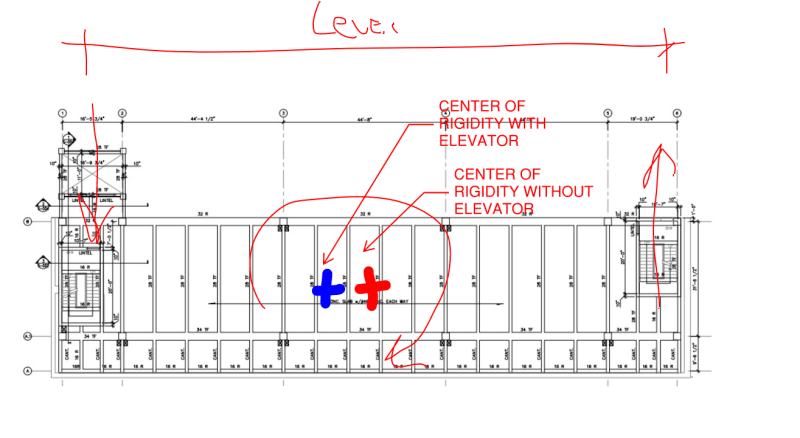Jdengos, the engineering principle is clear - eccentric stiffness influences the building response and can cause increased displacements, larger loads on lateral elements, and potentially high local forces such as an in diaphragms and wall-floor connections
Any one of those aspects, if not considered properly, could lead to poor structural performance, with the very worst case outcomes being the initiation of a collapse mechanism
I do agree that full collapse of a building is unlikely though - or at least, full collapse of this building because, as Kootk said, it has good structural systems elsewhere
The CTV building I referenced earlier is a very high profile failure in my country that suffered from all of these issues (and more)
It was a crappily designed and badly built multi-storey building that relied on an eccentric shear core to provide lateral stability
The high eccentricity of the shear core meant that the outside 'gravity frames' suffered very large displacements and ended up failing in shear
The diaphragm was also terribly connected to the walls and the diaphragm connections subsequently failed
Do be careful with infill block walls though, they will add massively to your stiffness in that external core unless the infills are isolated from the surrounding frames
Effectively that structure is a rigid block wall structure not a frame structure if all bays are masonry infilled
The issue that this building could have is that you have a rigid infill structure off to one side connected by a small section of diaphragm
To maintain displacement compatibility your building needs to push large amounts of load through that diaphragm and into the core - this will influence the building response to be more torsional than it otherwise would be
This could also lead to failure of that section of the floor due to the large loads going through it

